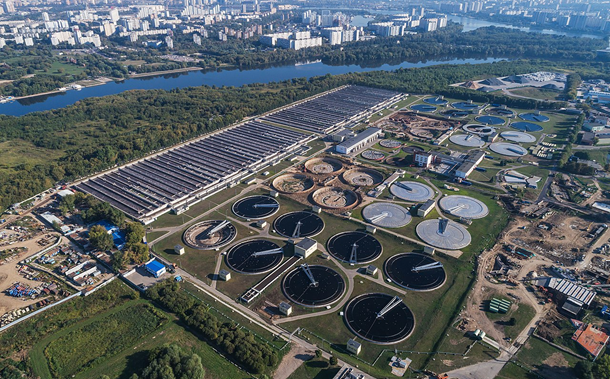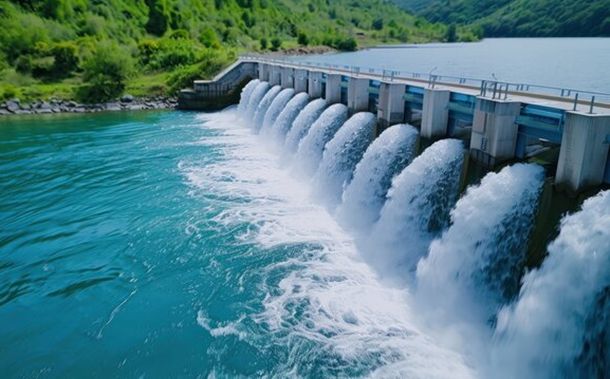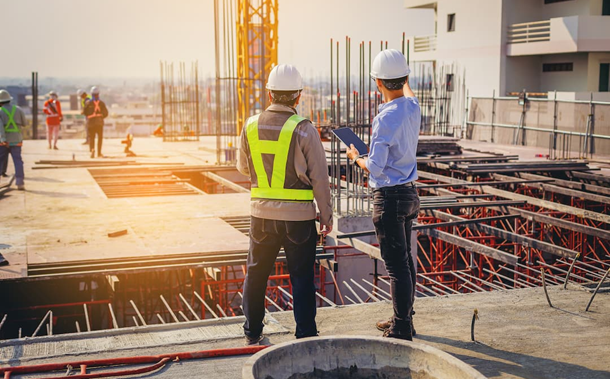Improving Efficiency and Accuracy in Construction Sales Valuation via Random Search Optimization
Downloads
The valuation of construction project sales depends on various economic variables and indices. While accurate cost predictions support financial planning and risk management, traditional grid-search optimization-based machine learning techniques often demand extensive computational resources for training and optimization, especially when large datasets require comprehensive machine learning models. Recent investigations highlighted that random search optimization can shorten the training time of ensemble machine learning methods. Nevertheless, its effectiveness for construction project cost valuation, especially when examining model accuracy and training time, is still unclear. This research examines the usability of random search optimization for machine learning models in construction project sales valuation and compares it with the standard grid search approach. A large dataset with 103 inputs from 372 construction projects is used as the basis of the investigation. Six different machine learning models are designed and optimized under grid search and random search approaches to evaluate training time and predictive accuracy. The study results indicate that random search optimization cuts training time by up to 70% and preserves a high level of accuracy, with the best-performing model achieving an R² of 0.98 on the test set. These findings highlight random search optimization as a strong alternative to grid search, providing significant computational savings without harming model performance. The study offers guidance on effective hyperparameter tuning methods that may facilitate scalable and budget-friendly predictive models for construction project valuation.
Downloads
[1] Peter, N. J., Okagbue, H. I., Obasi, E. C., & Akinola, A. O. (2020). Review on the Application of Artificial Neural Networks in Real Estate Valuation. International Journal of Advanced Trends in Computer Science and Engineering, 9(3), 2918–2925. doi:10.30534/ijatcse/2020/66932020.
[2] Kaklauskas, A., Zavadskas, E. K., Lepkova, N., Raslanas, S., Dauksys, K., Vetloviene, I., & Ubarte, I. (2021). Sustainable construction investment, real estate development, and covid-19: A review of literature in the field. Sustainability (Switzerland), 13(13), 7420. doi:10.3390/su13137420.
[3] Tsou, W. L., & Sun, C. Y. (2021). Consumers’ choice between real estate investment and consumption: A case study in taiwan. Sustainability (Switzerland), 13(21), 11607. doi:10.3390/su132111607.
[4] Sorinola, M. (2024). Building Climate Risk Assessment Models For Sustainable Investment Decision-Making. International Journal of Engineering Technology Research & Management, 8(1).
[5] Duca, J. V., Muellbauer, J., & Murphy, A. (2021). What drives house price cycles? International experience and policy issues. Journal of Economic Literature, 59(3), 773–864. doi:10.1257/JEL.20201325.
[6] Rahmawati, D., Rahadi, R. A., Putri, A. D., Tinggi, S., Ekonomi, I., & Bandung, E. (2021). The Current State of Property Development in Indonesia During the Covid-19 Pandemic. International Journal of Innovation, Creativity and Change, 15(7), 1-19.
[7] Banka, M., Dao, M. T. H., & Minh, D. T. (2022). Analysis of business strategy of real estate developers in Vietnam: the application of QSPM matrix. International Journal of Multidisciplinary Research and Growth Evaluation, 3(1), 188-196.
[8] Kumar, K., & Singh, D. D. P. (2023). Assessing the dynamics of urbanization: A comprehensive review of associated risks and mitigation strategies. Journal of Research in Infrastructure Designing, 6(3), 1-10.
[9] Kiviaho, A., & Toivonen, S. (2023). Forces impacting the real estate market environment in shrinking cities: possible drivers of future development. European Planning Studies, 31(1), 189–211. doi:10.1080/09654313.2022.2121604.
[10] Kresse, K., & van der Krabben, E. (2022). Rapid urbanization, land pooling policies & the concentration of wealth. Land Use Policy, 116, 106050. doi:10.1016/j.landusepol.2022.106050.
[11] Frew, J., & Jud, G. D. (2003). Estimating the value of apartment buildings. Journal of Real Estate Research, 25(1), 77–86. doi:10.1080/10835547.2003.12091101.
[12] Limsombunc, V., Gan, C., & Lee, M. (2004). House Price Prediction: Hedonic Price Model vs. Artificial Neural Network. American Journal of Applied Sciences, 1(3), 193–201. doi:10.3844/ajassp.2004.193.201.
[13] Kang, Y., Zhang, F., Peng, W., Gao, S., Rao, J., Duarte, F., & Ratti, C. (2021). Understanding house price appreciation using multi-source big geo-data and machine learning. Land Use Policy, 111, 104919. doi:10.1016/j.landusepol.2020.104919.
[14] Jiménez-Jiménez, S. I., Ojeda-Bustamante, W., Marcial-Pablo, M. D. J., & Enciso, J. (2021). Digital terrain models generated with low-cost UAV photogrammetry: Methodology and accuracy. ISPRS International Journal of Geo-Information, 10(5), 285. doi:10.3390/ijgi10050285.
[15] Karadimos, P., & Anthopoulos, L. (2024). A taxonomy of machine learning techniques for construction cost estimation. Innovative Infrastructure Solutions, 9(11), 420. doi:10.1007/s41062-024-01705-0.
[16] Skitmore, M., Irons, J., & Armitage, L. (2007). Valuation accuracy and variation: a meta-analysis. Proceedings from the PRRES Conference 2007, 21-24 June, 2007, Perth, Australia.
[17] Ibisola, A. S., Durodola, O. D., Oluwatobi, A. O., Oni, A. S., & Peter, N. J. (2019). Factors contributing to the valuation of arts and artifacts in Ogun State, Nigeria. International Journal of Civil Engineering and Technology, 10(1), 2224–2231.
[18] Calhoun, C. A. (2003). Property valuation models and house price indexes for the provinces of Thailand: 1992-2000. Housing Finance International, 17(3), 31-41.
[19] Ćetković, J., Lakić, S., Lazarevska, M., Žarković, M., Vujošević, S., Cvijović, J., & Gogić, M. (2018). Assessment of the Real Estate Market Value in the European Market by Artificial Neural Networks Application. Complexity, 2018. doi:10.1155/2018/1472957.
[20] Fan, G. Z., Ong, S. E., & Koh, H. C. (2006). Determinants of house price: A decision tree approach. Urban Studies, 43(12), 2301–2316. doi:10.1080/00420980600990928.
[21] Gao, L., Guo, Z., Zhang, H., Xu, X., & Shen, H. T. (2017). Video Captioning with Attention-Based LSTM and Semantic Consistency. IEEE Transactions on Multimedia, 19(9), 2045–2055. doi:10.1109/TMM.2017.2729019.
[22] Demetriou, D. (2017). A spatially based artificial neural network mass valuation model for land consolidation. Environment and Planning B: Urban Analytics and City Science, 44(5), 864–883. doi:10.1177/0265813516652115.
[23] Park, B., & Bae, J. K. (2015). Using machine learning algorithms for housing price prediction: The case of Fairfax County, Virginia housing data. Expert Systems with Applications, 42(6), 2928–2934. doi:10.1016/j.eswa.2014.11.040.
[24] Ho, W. K. O., Tang, B. S., & Wong, S. W. (2021). Predicting property prices with machine learning algorithms. Journal of Property Research, 38(1), 48–70. doi:10.1080/09599916.2020.1832558.
[25] Mora-Garcia, R. T., Cespedes-Lopez, M. F., & Perez-Sanchez, V. R. (2022). Housing Price Prediction Using Machine Learning Algorithms in COVID-19 Times. Land, 11(11), 2100. doi:10.3390/land11112100.
[26] Jafary, P., Shojaei, D., Rajabifard, A., & Ngo, T. (2024). Automated land valuation models: A comparative study of four machine learning and deep learning methods based on a comprehensive range of influential factors. Cities, 151, 105115. doi:10.1016/j.cities.2024.105115.
[27] Gurmu, A., & Miri, M. P. (2023). Machine learning regression for estimating the cost range of building projects. Construction Innovation, 25(2), 577–593. doi:10.1108/CI-08-2022-0197.
[28] Sammour, F., Alkailani, H., Sweis, G. J., Sweis, R. J., Maaitah, W., & Alashkar, A. (2024). Forecasting demand in the residential construction industry using machine learning algorithms in Jordan. Construction Innovation, 24(5), 1228–1254. doi:10.1108/CI-10-2022-0279.
[29] Calainho, F. D., van de Minne, A. M., & Francke, M. K. (2024). A Machine Learning Approach to Price Indices: Applications in Commercial Real Estate. Journal of Real Estate Finance and Economics, 68(4), 624–653. doi:10.1007/s11146-022-09893-1.
[30] Jafary, P., Shojaei, D., Rajabifard, A., & Ngo, T. (2024). Automating property valuation at the macro scale of suburban level: A multi-step method based on spatial imputation techniques, machine learning and deep learning. Habitat International, 148, 103075. doi:10.1016/j.habitatint.2024.103075.
[31] Özalp, A. Y., & Akıncı, H. (2024). Comparison of tree-based machine learning algorithms in price prediction of residential real estate. Gümüşhane Üniversitesi Fen Bilimleri Dergisi, 14(1), 116-130.
[32] Mathotaarachchi, K. V., Hasan, R., & Mahmood, S. (2024). Advanced Machine Learning Techniques for Predictive Modeling of Property Prices. Information (Switzerland), 15(6), 295. doi:10.3390/info15060295.
[33] Hoxha, V. (2024). Comparative analysis of machine learning models in predicting housing prices: a case study of Prishtina’s real estate market. International Journal of Housing Markets and Analysis, 18(3), 694-711. doi:10.1108/IJHMA-09-2023-0120.
[34] Gunes, T. (2023). Model agnostic interpretable machine learning for residential property valuation. Survey Review, 56(399), 525–540. doi:10.1080/00396265.2023.2293366.
[35] Areo, G. (2024). The Impact of Artificial Intelligence and Machine Learning on Real Estate: Current Applications and Future Trends. ResearchGate, 1-9.
[36] Su, T., Li, H., & An, Y. (2021). A BIM and machine learning integration framework for automated property valuation. Journal of Building Engineering, 44, 102636. doi:10.1016/j.jobe.2021.102636.
[37] Baur, K., Rosenfelder, M., & Lutz, B. (2023). Automated real estate valuation with machine learning models using property descriptions. Expert Systems with Applications, 213, 119147. doi:10.1016/j.eswa.2022.119147.
[38] Rafiei, M. H., & Adeli, H. (2016). A Novel Machine Learning Model for Estimation of Sale Prices of Real Estate Units. Journal of Construction Engineering and Management, 142(2), 4015066. doi:10.1061/(asce)co.1943-7862.0001047.
[39] Kim, G. H., Yoon, J. E., An, S. H., Cho, H. H., & Kang, K. I. (2004). Neural network model incorporating a genetic algorithm in estimating construction costs. Building and Environment, 39(11), 1333–1340. doi:10.1016/j.buildenv.2004.03.009.
[40] Gribniak, V., Mang, H. A., Kupliauskas, R., Kaklauskas, G., & Juozapaitis, A. (2016). Stochastic Tension-Stiffening Approach for the Solution of Serviceability Problems in Reinforced Concrete: Exploration of Predictive Capacity. Computer-Aided Civil and Infrastructure Engineering, 31(6), 416–431. doi:10.1111/mice.12183.
[41] El Hajj, B., Schoefs, F., Castanier, B., & Yeung, T. (2016). A Condition‐Based Deterioration Model for the Stochastic Dependency of Corrosion Rate and Crack Propagation in Corroded Concrete Structures. Computer-Aided Civil and Infrastructure Engineering, 32(1), 18–33. doi:10.1111/mice.12208.
[42] Jang, Y., Jeong, I., & Cho, Y. K. (2021). Identifying impact of variables in deep learning models on bankruptcy prediction of construction contractors. Engineering, Construction and Architectural Management, 28(10), 3282–3298. doi:10.1108/ECAM-06-2020-0386.
[43] Elalem, Y. K., Maier, S., & Seifert, R. W. (2023). A machine learning-based framework for forecasting sales of new products with short life cycles using deep neural networks. International Journal of Forecasting, 39(4), 1874–1894. doi:10.1016/j.ijforecast.2022.09.005.
[44] Saha, P., Lyu, J., Desai, D., Chauhan, R., Jeyapaulraj, J., Chu, P., Sommer, P., & Mehta, D. (2024). Machine Learning-based Relative Valuation of Municipal Bonds. Proceedings of the 5th ACM International Conference on AI in Finance, 634–642. doi:10.1145/3677052.3698650.
- Authors retain all copyrights. It is noticeable that authors will not be forced to sign any copyright transfer agreements.
- This work (including HTML and PDF Files) is licensed under a Creative Commons Attribution 4.0 International License.![]()














